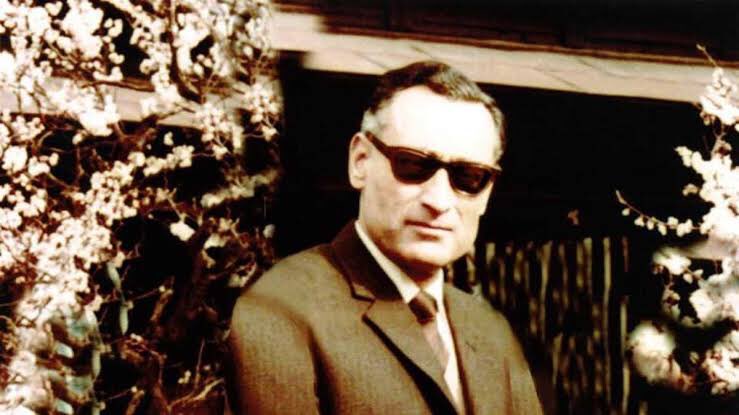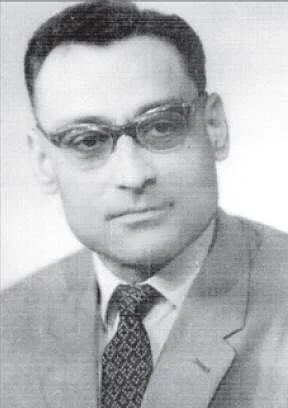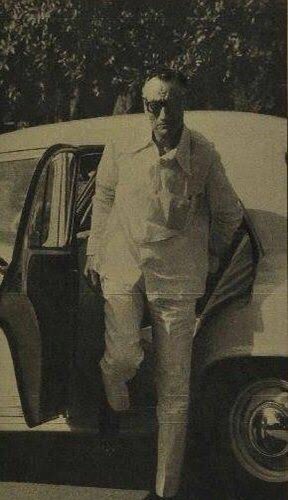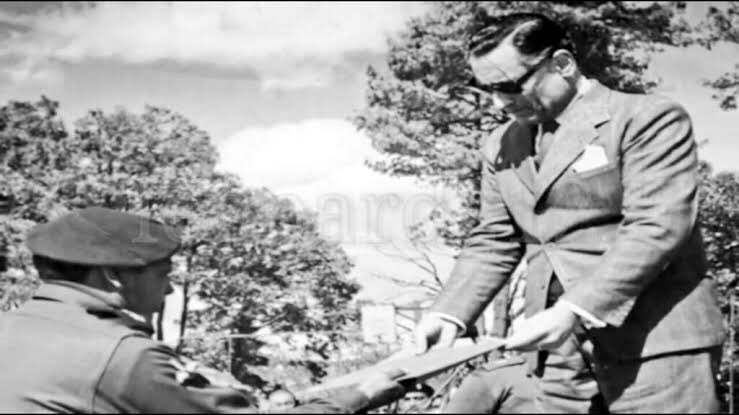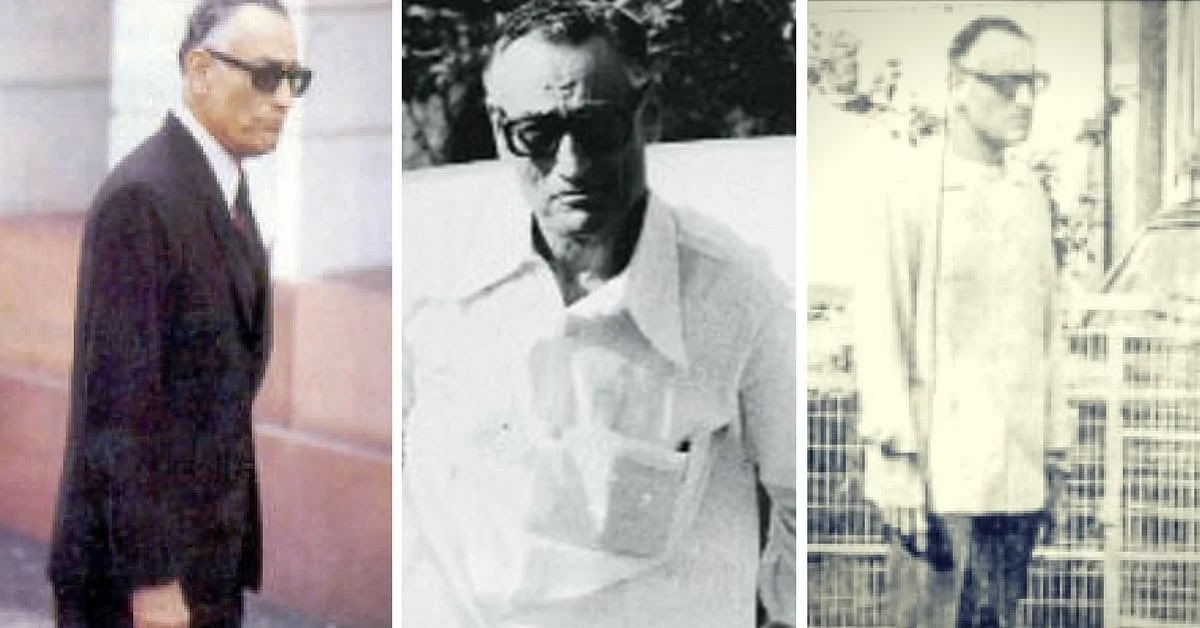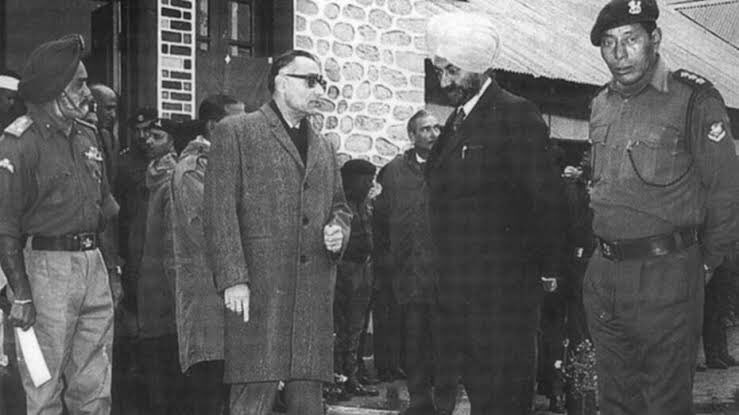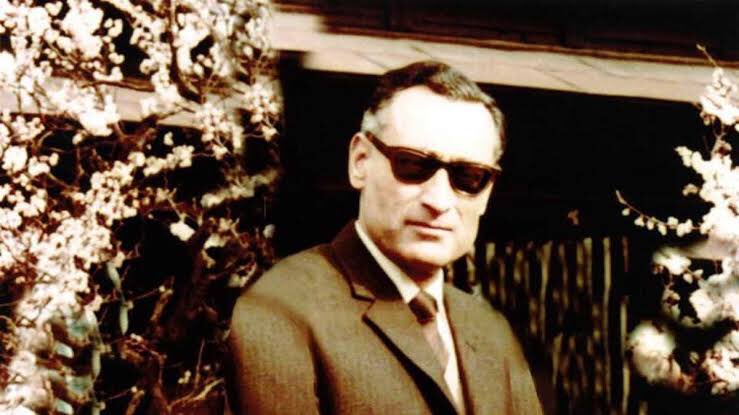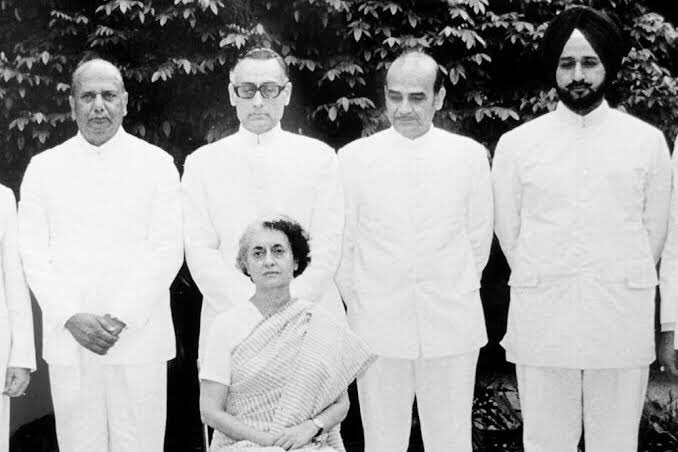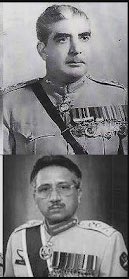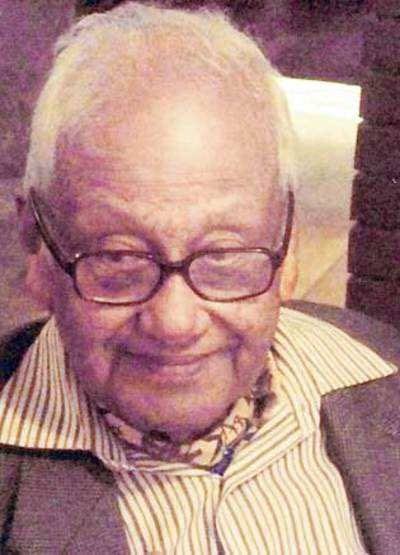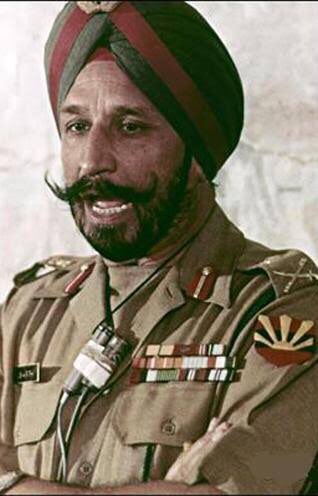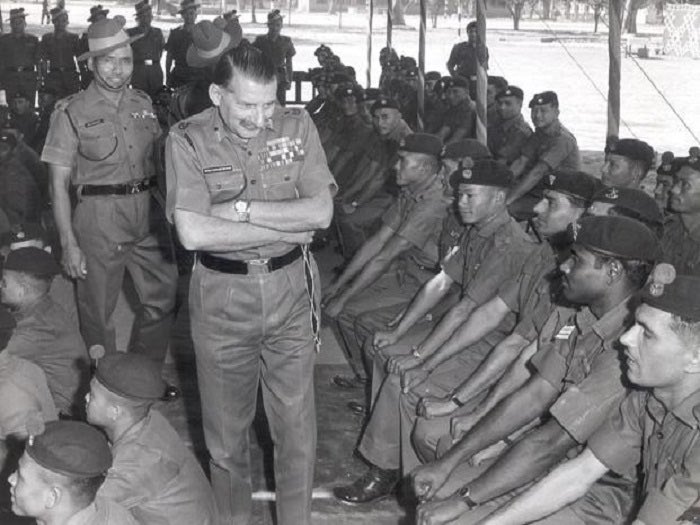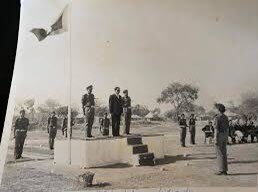“This man, Kao, knows more about my country than I do!”
Connections of the Research and Analysis Wing with the Awami League leader Sheikh Mujibur Rahman ran long back before the Bangladesh Liberation war even began. Even before the formation of the RAW,+
Connections of the Research and Analysis Wing with the Awami League leader Sheikh Mujibur Rahman ran long back before the Bangladesh Liberation war even began. Even before the formation of the RAW,+
Indian Intelligence Bureau Operatives had met Sheikh Mujibur Rahman for the first time in 1963. After the formation of the RAW in 1968, the RAW had virtually estimated every move of friend and foe inside Bangladesh.+
Mujib’s successor, President Ziaur Rahman had often remarked this about Rameshwarnath Kao-
“This man, Kao, knows more about my country than I do!”
“This man, Kao, knows more about my country than I do!”
Rameshwar Nath Kao was the first chief of India& #39;s external intelligence agency, the Research and Analysis Wing. He played a major part in helping the Bengalis of East Pakistan create a new nation, secured the merger of Sikkim into the Indian nation and built R&AW into a+
formidable outfit, comparable to the best in the world.
He was a shy and private man. He believed he need not give any public interview or statements. The only interview of him was to Pupul Jayakar (cultural adviser and one of Indira Gandhi& #39;s closest friends)+
He was a shy and private man. He believed he need not give any public interview or statements. The only interview of him was to Pupul Jayakar (cultural adviser and one of Indira Gandhi& #39;s closest friends)+
published in 1993. Apart from that he did not give any interviews, did not appear in any public functions. His privacy was legendary.
There was difficulty in finding out about his early life, his joining the police in 1940. One had to work hard on the family, co-workers and+
There was difficulty in finding out about his early life, his joining the police in 1940. One had to work hard on the family, co-workers and+
organisation to get photographs. Luckily he had left behind a recording of his memoirs which were transcribed into seven different files.
Four of those files have been declassified in the Nehru Memorial Museum & Library.+
Four of those files have been declassified in the Nehru Memorial Museum & Library.+
One is about his early life,how his mother brought them up
The second is about him joining the Intelligence Bureau and Indian Police.
The third is on his assignment to Ghana which actually started his upward rise in the hierarchy.
The fourth is about the Air India& #39;s Kashmir+
The second is about him joining the Intelligence Bureau and Indian Police.
The third is on his assignment to Ghana which actually started his upward rise in the hierarchy.
The fourth is about the Air India& #39;s Kashmir+
Princess crash investigation which propelled him into the limelight in 1955.
The bulky files are his personal recollections,transcribed & preserved there.Three files are still not open because he said they will be opened 25 years after his death so they will be available in 2027
The bulky files are his personal recollections,transcribed & preserved there.Three files are still not open because he said they will be opened 25 years after his death so they will be available in 2027
Those files are about Bangladesh, the merger of Sikkim and Mrs Indira Gandhi& #39;s assassination.
The files were transcribed by an admirer who was a foreign service officer in 1999-2000.
He had a difficult childhood because he lost his father when he was 6.+
The files were transcribed by an admirer who was a foreign service officer in 1999-2000.
He had a difficult childhood because he lost his father when he was 6.+
The family moved around a bit, he made good when he joined the law faculty in Allahabad and was selected to the Indian Police which really opened up the world for him.
He was lucky because at that time, instead of 3 candidates, 4 were chosen & he joined the Indian Police in 1940.
He was lucky because at that time, instead of 3 candidates, 4 were chosen & he joined the Indian Police in 1940.
In 1947 he was selected to join the Intelligence Bureau and his rise began from there. He became chief security officer to Prime Minister Jawaharlal Nehru.
Nehru sent him on the advice of another legendary spy B N Mullick (then director, Intelligence Bureau) to investigate the+
Nehru sent him on the advice of another legendary spy B N Mullick (then director, Intelligence Bureau) to investigate the+
Air India Kashmir Princess air crash. The plane crashed off the coast of Indonesia in 1955. It was supposed to have carried (then Chinese premier) Zhou Enlai.
He spent six months in Hong Kong and China which gave him a glimpse of the secret service, espionage and started his+
He spent six months in Hong Kong and China which gave him a glimpse of the secret service, espionage and started his+
connection with important people who were on the rise in the world of intelligence.
In 1957 he was chosen to establish the foreign intelligence service bureau of the newly independent Ghana after it asked for India& #39;s help. He spent a year in Ghana.+
In 1957 he was chosen to establish the foreign intelligence service bureau of the newly independent Ghana after it asked for India& #39;s help. He spent a year in Ghana.+
He was very meticulous. He had a great memory. He knew how to delegate and choose the best people to work for him.
He had a distinct personality. He wasn& #39;t very gregarious and was uncomfortable in public. He wasn& #39;t even comfortable eating in public, but he knew how to extract+
He had a distinct personality. He wasn& #39;t very gregarious and was uncomfortable in public. He wasn& #39;t even comfortable eating in public, but he knew how to extract+
the best out of people, and that really stands out.
He had a very good and close relationship with Indira Gandhi who trusted him completely.
It helped that he was a Kashmiri Brahmin (Nehru was also a Kashmiri Brahmin and Indira Gandhi& #39;s closest advisers P N Haksar and P N Dhar+
He had a very good and close relationship with Indira Gandhi who trusted him completely.
It helped that he was a Kashmiri Brahmin (Nehru was also a Kashmiri Brahmin and Indira Gandhi& #39;s closest advisers P N Haksar and P N Dhar+
were also Kashmiri Brahmins)though he never lived in Kashmir or operated in Kashmir.
One important point about R N Kao was that he was not a classical undercover operative. He was a spymaster and institution builder.
He never operated underground or undercover or clandestinely+
One important point about R N Kao was that he was not a classical undercover operative. He was a spymaster and institution builder.
He never operated underground or undercover or clandestinely+
or ran agents. He did run agents, but not by living in any other country.
Of course, he had a great network, people admired him and respected him. He was clearly a leader who built institutions and that needs to be emphasised.+
Of course, he had a great network, people admired him and respected him. He was clearly a leader who built institutions and that needs to be emphasised.+
“On December 3, 1971 the Pakistani air force attack was anticipated to date by a mole in (then Pakistan president) Yahya Khan& #39;s office."
"Another coup by R&AW was tapping the phone conversation of (then Pakistan army chief) General Pervez Musharraf who was in a Beijing hotel+
"Another coup by R&AW was tapping the phone conversation of (then Pakistan army chief) General Pervez Musharraf who was in a Beijing hotel+
with his chief of general staff Lieutenant General Mohammed Aziz Khan in Islamabad during the Kargil war.+
R N Kao was anticipating all this as early as January 1971 after the (Pakistan) election results in 1970 that there could be trouble brewing and therefore, had prepared notes and assessment.
He had built a great team. I mentioned Mr P N Banerjee who was instrumental in doing+
He had built a great team. I mentioned Mr P N Banerjee who was instrumental in doing+
the field work in East Pakistan and building trust with Mujibur Rehman since 1969 onwards.
There was K Sankaran Nair, almost an alter ego of R N Kao, who actually ran clandestine operations and got crucial intelligence on the Pakistani plan to bomb Indian airfields on+
There was K Sankaran Nair, almost an alter ego of R N Kao, who actually ran clandestine operations and got crucial intelligence on the Pakistani plan to bomb Indian airfields on+
December 3 from a mole in Yahya Khan& #39;s office.
Kao& #39;s role was to look at the larger picture, getting all arms of the government to coordinate and not allow petty turf battles to cloud the judgement.+
Kao& #39;s role was to look at the larger picture, getting all arms of the government to coordinate and not allow petty turf battles to cloud the judgement.+
P N Banerjee had some reservations about giving some information to Lieutenant General Jagjit Singh Arora, the Eastern Army Commander, but he made it known why it was important to cooperate.
One of the crucial exercises that R&AW did at that time was to train the Mujib Bahini.+
One of the crucial exercises that R&AW did at that time was to train the Mujib Bahini.+
The Mukti Bahini was trained by the Indian Army.
The Mujib Bahini was the trusted inner circle of Mujibur Rehman led by his nephew. They were trained by the Special Frontier Force which consisted of Tibetans and was formed in the middle of the 1962 war with China.+
The Mujib Bahini was the trusted inner circle of Mujibur Rehman led by his nephew. They were trained by the Special Frontier Force which consisted of Tibetans and was formed in the middle of the 1962 war with China.+
He also had a good relationship with (then chief of the army staff General) Sam Manekshaw too.
Sam would ask if he could confirm the information if a report came from the Eastern Army commander. There is an exchange of letters between them during those years.+
Sam would ask if he could confirm the information if a report came from the Eastern Army commander. There is an exchange of letters between them during those years.+
They respected and had affection for each other.
His foremost contributions were to build institutions and the need for a civil intelligence agency which was not built on the lines of the central armed police force.
He wanted talent to flow into the organisation from various+
His foremost contributions were to build institutions and the need for a civil intelligence agency which was not built on the lines of the central armed police force.
He wanted talent to flow into the organisation from various+
streams, he recruited people from the postal service, customs and even wanted people from the banking and private sector.
He looked at the larger picture because he felt that policing and the Intelligence Bureau work within the confines of the country& #39;s border and have the+
He looked at the larger picture because he felt that policing and the Intelligence Bureau work within the confines of the country& #39;s border and have the+
backup of the country& #39;s forces.
But R&AW operatives posted abroad are on their own like the classical CIA or MI6. He wanted people with various talents.
He also started a science and technology division which discovered through pictures and soil samples etc, about+
But R&AW operatives posted abroad are on their own like the classical CIA or MI6. He wanted people with various talents.
He also started a science and technology division which discovered through pictures and soil samples etc, about+
Pakistan& #39;s nuclear programme as early as 1976.
He had a much broader vision than any of the people at that time. He did not look at it as a narrow fiefdom.
He wanted to set up 13 stations in different countries from Fiji to Geneva and from Paris to Bonn in 1969. The ministry+
He had a much broader vision than any of the people at that time. He did not look at it as a narrow fiefdom.
He wanted to set up 13 stations in different countries from Fiji to Geneva and from Paris to Bonn in 1969. The ministry+
of external affairs said there was no budget and it was not advisable.
His access to the prime minister helped R&AW get a sure footing in the initial years.
He started taping his memoirs a month after he took premature retirement+
His access to the prime minister helped R&AW get a sure footing in the initial years.
He started taping his memoirs a month after he took premature retirement+
because he had an uncomfortable relationship with (then prime minister) Morarji Desai.
R&AW was seen as the Gestapo of Indira Gandhi by the then Opposition. He was treated by suspicion by the Janata Party government. Kao endured that & came back with a salary of Rs 1 as senior+
R&AW was seen as the Gestapo of Indira Gandhi by the then Opposition. He was treated by suspicion by the Janata Party government. Kao endured that & came back with a salary of Rs 1 as senior+
adviser to Mrs Gandhi after she returned to power.
K Sankaran Nair also resigned subsequently. N F Suntook finally stabilised the organisation between 1977 and 1983. He was the second longest R&AW chief.+
K Sankaran Nair also resigned subsequently. N F Suntook finally stabilised the organisation between 1977 and 1983. He was the second longest R&AW chief.+
It has provided very crucial strategic intelligence. The Balakot strike where crucial intelligence was obtained by a R&AW operative from a couple of moles inside the camps who had sent vivid details of maps, number of people, locations etc, four days before the operation took+
place.
Those two moles are believed to have been killed.
R&AW has provided strategic intelligence. Of course, it has had its share of failures no doubt, but has served the country well.+
Those two moles are believed to have been killed.
R&AW has provided strategic intelligence. Of course, it has had its share of failures no doubt, but has served the country well.+
He was never recognised publicly, but he is looked up as a legend. In fact, R&AW runs an annual lecture called the R N Kao memorial lecture.
(Sources: https://m.rediff.com/news/interview/the-indian-hero-you-must-know-about/20191022.htm
https://m.rediff.com/news/inte... href=" https://m.rediff.com/news/interview/moles-at-terror-camps-sent-info-for-balakot-strike/20191023.htm
RN">https://m.rediff.com/news/inte... Kao Gentleman Spymaster, written by Nitin A Gokhale. )
RN">https://m.rediff.com/news/inte... Kao Gentleman Spymaster, written by Nitin A Gokhale. )

 Read on Twitter
Read on Twitter